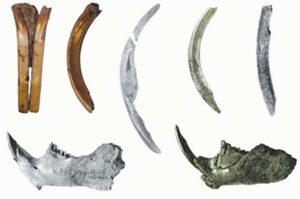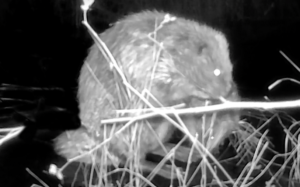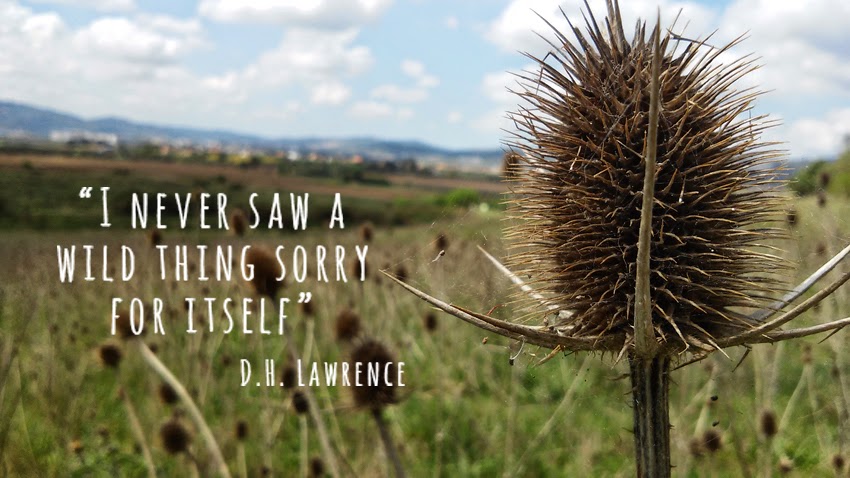This was a fine study to emerge yesterday. No one at all should be surprised, but we can all bask in the glow of having it prove exactly what we all knew it would.
 Study shows beavers had a big influence on how people in the Stone Age lived
Study shows beavers had a big influence on how people in the Stone Age lived
For thousands of years, beavers had a big influence on the Dutch ecosystem and the people that lived there. This is the conclusion of research by archaeologist Nathalie Brusgaard. The rodents were used for food, clothing and tools, and created a landscape hospitable to many other species.
Together with fellow archaeologist Shumon Hussain (Aarhus University), Brusgaard analyzed previous excavations in the Netherlands, southern Scandinavia, the Baltic region and Russia. These showed that beavers were a much larger part of the human diet and landscape of northern Europe than had previously been thought.
 Hunter-gatherers hunted beavers in the Middle and Late Stone Age for their meat, fur and castoreum, and used their bones and teeth to make tools. Beavers were one of the most common mammals at some archaeological sites in the Netherlands according to research recently published in The Holocene.
Hunter-gatherers hunted beavers in the Middle and Late Stone Age for their meat, fur and castoreum, and used their bones and teeth to make tools. Beavers were one of the most common mammals at some archaeological sites in the Netherlands according to research recently published in The Holocene.
According to Brusgaard, the beavers created a diverse ecosystem. They change the water level in their habitat so the entrance to their lodge is flooded but they can sleep in the dry. To achieve this, they need the water at a certain level, which they control by building dams.
Other organisms, such as fish, waterfowl and certain plants, benefit from the resulting landscape. “Beavers create a lot of dynamism in a forest, which is good for biodiversity. At archaeological sites where there were many beaver traces, there were also many traces of otters, wild boar, pike, perch and carp. These species thrive in the ecosystem that beavers create.”
Do get that? For thousands of years primitive man found life better and more comfortable and more rewarding when they were beavers around, not just to dress up in their furs or carve things with their teeth but because they were actively making the world better for a million other species which they were going to use later.
Life is better with beavers. Say it with me now.
The research suggests that people liked to live in these “beaver landscapes” because of the presence of food and resources. “We suspect that hunter-gatherers benefited from the rich biodiversity that beavers created.” It is clear from traces on bone remains that people ate beavers. Research on beaver skulls shows that hunters killed them with a blow to the head, presumably to avoid damaging the fur to ensure it could still be used. Beaver jaws and teeth were used to make woodworking tools.
Brusgaard’s research shows that humans benefitted from beavers for thousands of years. “We can learn lessons from the past. And we all benefit from a healthy ecosystem. We have to learn once again to live with beavers.”
Annnnd scene! I could not have said that better myself Nathalie…you have all my full endorsement. So by the time that we completely destroyed the population for greed, we already knew how important they were for thousands of years and decided to do it anyway,
Not a surprise.






 Remember a few days ago we talked about the great new park in Delaware based on stories of the Nanicoke tribe? I showed you the new climbing structure where parents can use their smart phone to hear the creation story of “How the beaver got its tail” and I was so impressed I said I would go looking for it. Well I did and I just know you want to hear all about it.
Remember a few days ago we talked about the great new park in Delaware based on stories of the Nanicoke tribe? I showed you the new climbing structure where parents can use their smart phone to hear the creation story of “How the beaver got its tail” and I was so impressed I said I would go looking for it. Well I did and I just know you want to hear all about it.



































